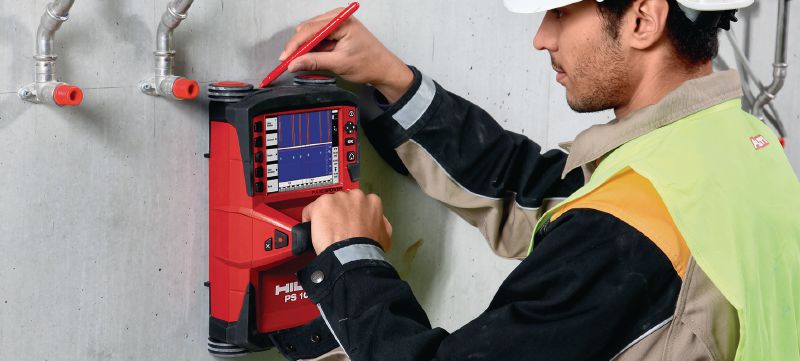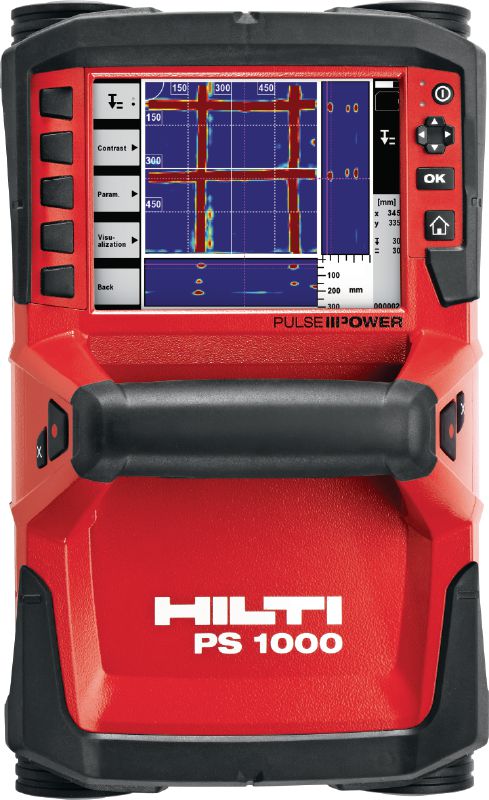Why Choose RainierGPR Concrete Scanning for Accurate Subsurface Analysis
Why Choose RainierGPR Concrete Scanning for Accurate Subsurface Analysis
Blog Article
Taking Full Advantage Of Efficiency and Lessening Risks: The Duty of Concrete Scanning in Building And Construction
In the world of construction, where precision and safety and security are extremely important, the use of concrete scanning innovation has become a crucial device for job managers and designers alike. By taking advantage of innovative scanning approaches, building and construction teams can navigate complicated environments with increased effectiveness while minimizing potential threats that could jeopardize both budget plans and timelines. The detailed dancing in between making the most of efficiency and minimizing threats in building rest on the capability to peer under the surface area, exposing a globe of concealed challenges and chances. The function of concrete scanning in this fragile balance is not simply helpful but transformative, supplying a glance right into a future where pricey errors are preempted, security is prioritized, and quality is non-negotiable.

Importance of Concrete Scanning
Concrete scanning plays a crucial role in making sure the structural stability and safety and security of building jobs by properly detecting ingrained things and potential threats within concrete frameworks. By using numerous scanning technologies such as ground-penetrating radar (GPR) and electromagnetic induction, building and construction groups can identify rebar, post-tension wires, channels, and other hidden barriers prior to exploration, reducing, or coring right into concrete. This aggressive method aids avoid costly damages, injuries, and task hold-ups that might occur from accidentally striking these objects throughout building and construction tasks.
In addition, concrete scanning aids in conformity with safety guidelines and high quality standards by supplying accurate info regarding the problem of concrete frameworks. It enables project supervisors and engineers to make informed decisions regarding structural alterations, repair work, or supports based on reliable information acquired through scanning processes. Furthermore, the specific mapping of embedded objects ensures the reliable implementation of building plans, decreasing the threat of mistakes and making certain the long life and sturdiness of the constructed environment. Eventually, buying concrete scanning solutions contributes to the general success and safety and security of building and construction tasks.

Advanced Innovation in Construction
Provided the boosting need for precision and performance in building methods, the assimilation of innovative innovation has actually become critical in enhancing job outcomes and guaranteeing ideal precaution - RainierGPR Concrete Scanning. One substantial innovation is Building Details Modeling (BIM), an electronic depiction of a structure's functional and physical qualities. BIM enables for better cooperation amongst stakeholders, enhanced visualization of the project, and improved decision-making throughout the building and construction process. Additionally, the usage of drones in construction has reinvented site studies, progression monitoring, and examinations. Drones provide real-time information, enhance safety by lowering the need for employees to accessibility high-risk locations, and boost overall task surveillance. Furthermore, the implementation of Augmented Reality (AR) and Virtual Reality (VIRTUAL REALITY) modern technologies in building and construction design and preparation stages makes it possible for stakeholders to imagine the final item, recognize potential problems, and make needed modifications prior to construction begins. These modern technologies enhance processes, reduce errors, and eventually contribute to extra efficient and more secure building and construction techniques.

Advantages of Object Mapping
The utilization of things mapping modern technology in building and construction tasks offers a plethora of advantages that boost task planning and implementation. One of the vital benefits of things mapping is its ability to provide detailed and accurate information about the location of underground utilities, structural elements, and various other items within the building website. This details is critical for making certain that excavation and drilling activities are accomplished securely and effectively, minimizing the risk of damages to existing facilities.
In addition, item More hints mapping technology allows construction groups to produce exact 3D models of the website, enabling far better visualization of the job and enhanced control among different professions - RainierGPR Concrete Scanning. This improved spatial understanding aids to determine prospective clashes and problems early in the drawing board, minimizing the demand for pricey rework and find this hold-ups throughout building
In addition, object mapping can additionally improve the paperwork procedure by giving digital documents of the website previously, throughout, and after construction. These documents work as valuable references for future maintenance and renovation jobs, ultimately boosting the long-lasting effectiveness and sustainability of the developed environment.
Avoiding Pricey Mistakes
Object mapping modern technology's role in construction extends beyond improving job preparation and implementation to include an essential element: preventing costly blunders. By utilizing advanced concrete scanning techniques, building and construction groups can determine possible hazards such as rebar blockage, post-tension wires, or spaces within concrete structures. Spotting these problems early on aids in preventing expensive errors throughout the building process. As an example, hitting a post-tension cable television throughout boring can lead to structural damage, delays, and increased prices for repair work. In addition, precisely drawing up existing energies underground can stop unexpected damages during excavation, saving both money and time. In addition, by using things mapping innovation, building teams can guarantee that building elements are installed in the correct locations, minimizing the possibility of rework or retrofitting due to lost components. Overall, the aggressive usage of concrete scanning modern technologies in construction projects dramatically reduces the danger of errors and inevitably contributes to cost financial savings and job effectiveness.
Ensuring Safety and Quality
To promote the highest possible criteria of safety and quality in building jobs, the implementation of concrete scanning technology plays a pivotal duty. By using advanced scanning techniques such as ground-penetrating radar (GPR) and electromagnetic induction, building and construction teams can find prospective dangers concealed within concrete structures before starting any kind of job. This positive technique not only minimizes the risk of accidents on the building site find more information however likewise guarantees the architectural stability of the building.
Concrete scanning likewise helps in validating the placement of rebar, channels, and post-tension cable televisions, guaranteeing that these elements are appropriately placed according to the layout specifications. This accuracy in locating essential parts helps stop mistakes during the construction process, ultimately leading to a better completed product. Additionally, by recognizing any abnormalities or incongruities within the concrete early on, needed adjustments can be made quickly, reducing the probability of rework and expensive delays.
Essentially, concrete scanning technology functions as a valuable device in guarding both the safety and security of building workers and the total top quality of the built environment. Its capability to make sure and spot possible threats adherence to design criteria makes it a vital possession in contemporary building practices.

Final Thought
Finally, concrete scanning plays a crucial duty in taking full advantage of efficiency and reducing dangers in building jobs. By making use of innovative technology for object mapping, possible pricey errors can be protected against, guaranteeing safety and quality of the last structure. It is important for construction companies to focus on using concrete scanning to enhance performance, minimize dangers, and provide high-grade results in their tasks.
Concrete scanning plays a critical function in ensuring the architectural stability and safety of building and construction jobs by precisely finding ingrained objects and potential hazards within concrete frameworks. The application of Enhanced Fact (AR) and Virtual Reality (VIRTUAL REALITY) innovations in building design and preparation stages makes it possible for stakeholders to picture the last item, determine possible issues, and make necessary adjustments prior to building starts. By using sophisticated concrete scanning techniques, construction teams can recognize potential risks such as rebar congestion, post-tension cords, or voids within concrete structures. Generally, the proactive use of concrete scanning modern technologies in building projects considerably reduces the danger of errors and eventually contributes to cost savings and job efficiency.
To promote the highest possible requirements of security and high quality in building tasks, the implementation of concrete scanning modern technology plays a critical duty.
Report this page